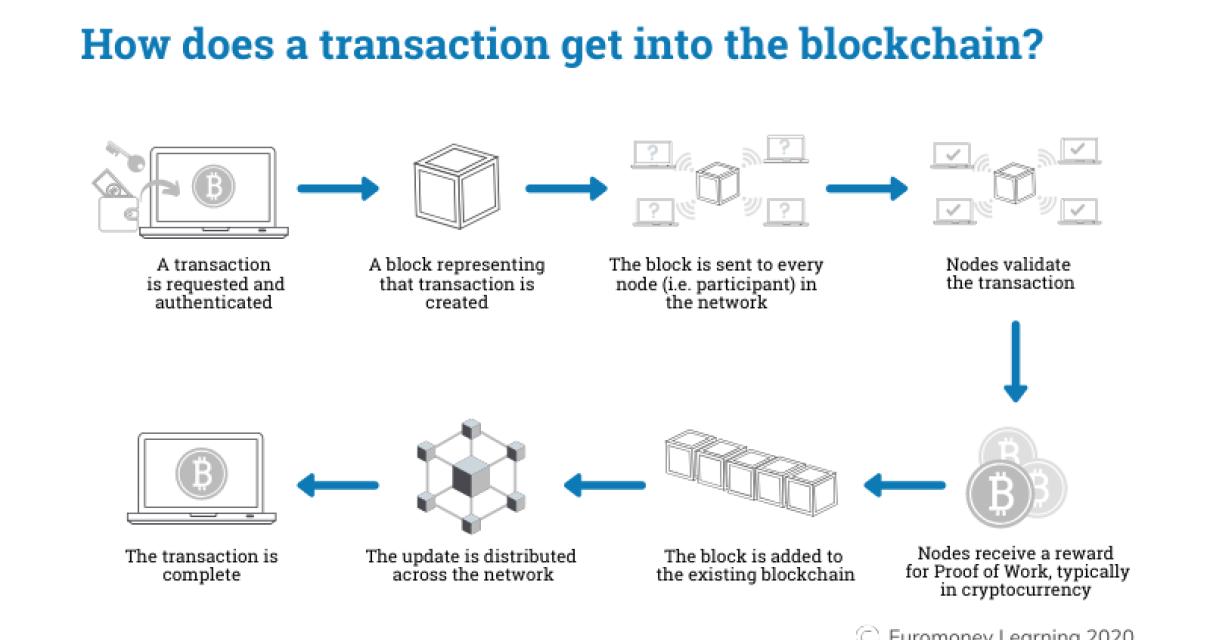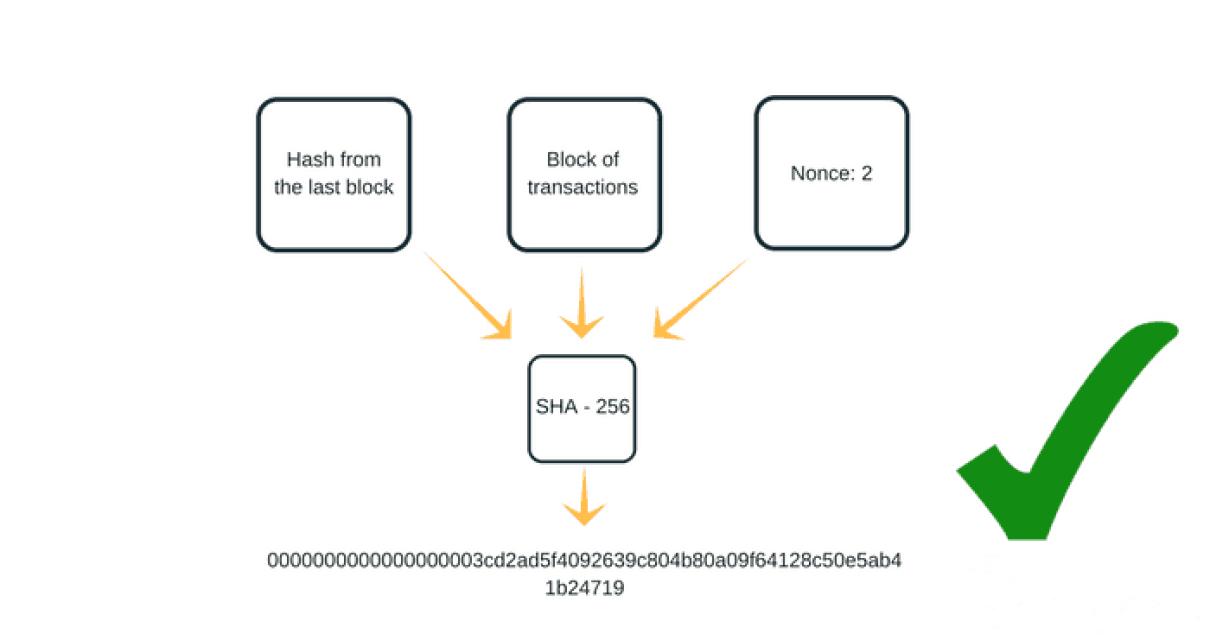How Proof of Work Secures the Blockchain
Proof of Work is a security mechanism used in the blockchain to ensure that nodes agree on the chain of blocks and transactions. Nodes that solve a cryptographic puzzle receive a reward (in bitcoin) and are verified by other nodes.
The puzzle is difficult to solve but not impossible. If a node solves the puzzle before anyone else, they can add the new block to the chain and receive the reward. This process creates an incentive for nodes to keep the network secure and to verify transactions.
The proof of work algorithm is designed to be resource-intensive and difficult to tamper with. This makes it difficult for attackers to create blocks that fake past transactions or reverse engineer the blockchain.
The Benefits of Proof of Work
Proof of work is a security protocol that requires a sender of a message to include a proof of work in order to be considered valid. The proof of work is a difficult problem that requires a lot of effort and time to solve. When a sender proves they have solved the problem, it becomes more difficult for others to create bogus messages.
The proof of work system helps to protect the network from spam and fraudulent messages. It also protects the network from attacks by malicious actors.
The proof of work system also helps to secure the network. This is because it takes a lot of time and effort to solve the proof of work problem. If someone was able to solve the problem quickly, they could potentially attack the network. By requiring the sender to solve the problem, the Proof of Work system makes it more difficult for attackers to break into the network.
Why Proof of Work is Essential to the Blockchain
Proof of work is an essential part of the blockchain. The blockchain is a public ledger of all cryptocurrency transactions. Anyone can view the blockchain, but only miners can create new blocks. Miners are rewarded with cryptocurrency for verifying and committing transactions to the blockchain.
Miners rigorously verify and commit transactions to the blockchain in an effort to create a tamper-proof record of every cryptocurrency transaction. Cryptocurrency wallets rely on the blockchain to confirm transactions and protect users’ holdings.
Without proof of work, the blockchain would be vulnerable to tampering and would not be tamper-proof.
How Proof of Work Works
Proof of work is a process that miners use to protect their networks from 51% attacks. Miners use their computers to solve complex math problems in order to verify the legitimacy of a block, and are rewarded with new bitcoin (or other digital currency) for their efforts.
In order for a miner to be rewarded for verifying a block, they need to find a solution to the mathematical problem first. This process is called mining, and it takes a lot of effort. Miners use powerful computers to try and solve the problem, and if they are successful, they are then rewarded with new bitcoin.
Mining is an incredibly important part of the blockchain network, and it is essential that miners are protected from 51% attacks. If a miner were to control more than 50% of the network’s mining power, they could easily conduct a 51% attack and steal all of the bitcoin in circulation.
Proof of work ensures that miners are always rewarded for their hard work, and it is one of the fundamental safeguards of the blockchain network.

The History of Proof of Work in Blockchain
The history of proof-of-work in blockchain can be traced back to the early days of the technology. At its core, proof-of-work is a consensus mechanism used to ensure the accuracy and integrity of a blockchain network.
Proof-of-work was first developed by Satoshi Nakamoto in 2008 as a way to prevent double spending on the bitcoin network. The algorithm works by requiring miners to solve a difficult cryptographic puzzle in order to add new transactions to the blockchain.
Since its inception, proof-of-work has been widely used as the basis for blockchain networks. Bitcoin, Ethereum, and many other cryptocurrencies are all based on proof-of-work.
The Future of Proof-of-Work in Blockchain
While proof-of-work remains an important part of the blockchain ecosystem, there is speculation that it may eventually be replaced by more innovative consensus mechanisms.
One such mechanism, called proof-of-stake, has been proposed as a possible replacement for proof-of-work.Proof-of-stake would work by requiring users to hold a certain amount of cryptocurrency in order to participate in the network.
While proof-of-stake has the potential to improve the security of blockchain networks, it has yet to be fully tested. Until that time, proof-of-work will likely remain an important part of the blockchain landscape.
The Future of Proof of Work in Blockchain
Proof-of-work (PoW) is a consensus mechanism used in blockchains to ensure the validity of transactions. PoW is energy-intensive and requires miners to solve complex cryptographic problems in order to add a new block to the chain.
Some proponents of PoW argue that it is more secure than other consensus mechanisms, such as proof-of-stake. Others argue that PoW is not necessary for blockchains and can be replaced by other mechanisms, such as sharding.
Despite these debates, PoW is likely to remain a key component of blockchains for some time to come.

The Advantages of Using Proof of Work
Proof of work is a process that miners use to secure a network. Miners are rewarded with cryptocurrency for verifying and committing transactions to the blockchain.
The benefits of using proof of work include:
Security: The security of a blockchain is based on the assumption that miners will not collude to cheat the system. The proof of work algorithm makes this difficult.
Efficiency: Proof of work leads to faster transaction times because it requires less processing power to verify a transaction.
Distributed: The distribution of mining power is not centralized like with other digital payment systems. This ensures that no individual or group can control the network.
Fairness: The proof of work algorithm is designed to be fair, which means that each miner is given an equal chance of mining a block.
Proof of work is a process that miners use to secure a network. Miners are rewarded with cryptocurrency for verifying and committing transactions to the blockchain.
Why Proof of Work is the Best Solution for Blockchain Security
Proof of Work is the most secure solution for blockchain security. Proof of Work is a security measure that requires nodes to solve a cryptographic puzzle in order to add a block to the blockchain. This puzzle is difficult to solve and requires a lot of processing power. This makes it difficult for anyone to tamper with the blockchain.